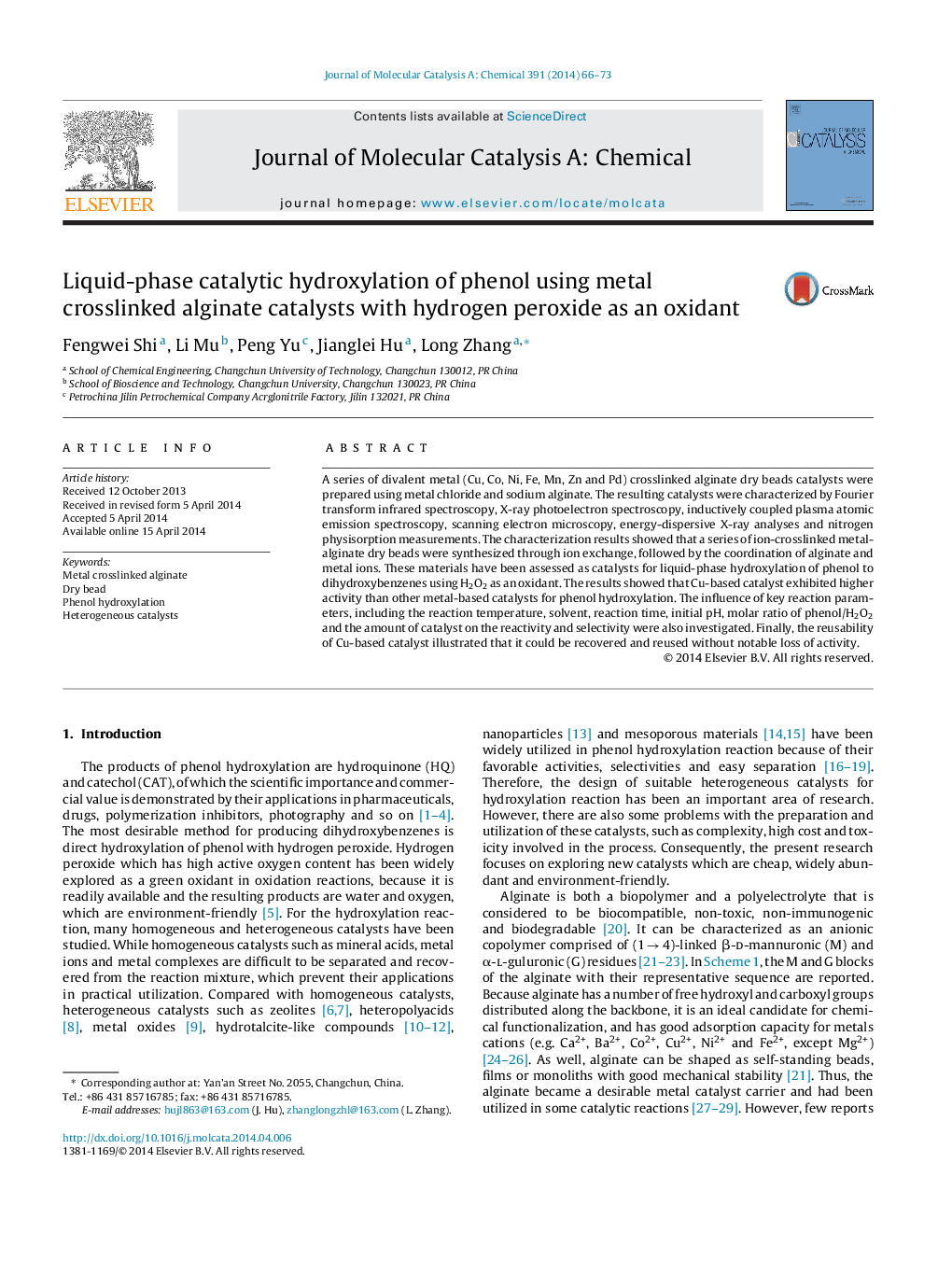| Article ID | Journal | Published Year | Pages | File Type |
|---|---|---|---|---|
| 65108 | Journal of Molecular Catalysis A: Chemical | 2014 | 8 Pages |
•Prepared a series of metal crosslinked alginate dry bead catalysts.•Different metal elements have different crosslinked content with alginate.•Catalysts for phenol hydroxylation.•The Cu-based catalyst exhibited the highest catalytic activity.•After reaction, catalysts kept their favorable catalytic activities.
A series of divalent metal (Cu, Co, Ni, Fe, Mn, Zn and Pd) crosslinked alginate dry beads catalysts were prepared using metal chloride and sodium alginate. The resulting catalysts were characterized by Fourier transform infrared spectroscopy, X-ray photoelectron spectroscopy, inductively coupled plasma atomic emission spectroscopy, scanning electron microscopy, energy-dispersive X-ray analyses and nitrogen physisorption measurements. The characterization results showed that a series of ion-crosslinked metal-alginate dry beads were synthesized through ion exchange, followed by the coordination of alginate and metal ions. These materials have been assessed as catalysts for liquid-phase hydroxylation of phenol to dihydroxybenzenes using H2O2 as an oxidant. The results showed that Cu-based catalyst exhibited higher activity than other metal-based catalysts for phenol hydroxylation. The influence of key reaction parameters, including the reaction temperature, solvent, reaction time, initial pH, molar ratio of phenol/H2O2 and the amount of catalyst on the reactivity and selectivity were also investigated. Finally, the reusability of Cu-based catalyst illustrated that it could be recovered and reused without notable loss of activity.
Graphical abstractFigure optionsDownload full-size imageDownload high-quality image (150 K)Download as PowerPoint slide
